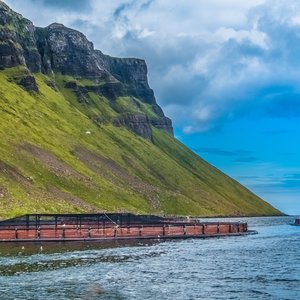In a bid to reduce pressure on traditional fish stocks, the European Meeso project, part of the EU's Horizon 2020 program, and SFI Harvest in the Norwegian Research Council have been researching new applications for deep-sea mesopelagic fish. These underutilized species could play a key role in the future of both aquafeed and human health.
Recent experiments have shown that fishmeal and silage produced from mesopelagic fish such as hatchetfish and lanternfish support efficient growth when used as protein and fat-rich ingredients in feed for salmon. Fishmeal from hatchetfish contained high levels of valuable fatty acids and phospholipids that showed positive health effects in the salmon intestine. In this study, small salmon in tanks were fed with feed where varying proportions of fishmeal from blue whiting had been replaced with either meal or silage from mesopelagic fish.
“The salmon grew very well and had a good appetite for all the feeds. It was a good experiment where we had to stop the trial one week before planned, due to the high growth rate in fish,” said Sissel Albrektsen, who has led the experiments in the projects. Fish fed a mesopelagic meal and silage showed similar high growth as fish fed the conventional blue whiting fishmeal.
Health benefits in humans
In addition to benefits in aquaculture, mesopelagic fish offer health benefits to humans. Researchers identified peptides from hydrolysates with anti-inflammatory properties, which could potentially be used to create new medicines for chronic conditions and manage blood pressure and blood sugar levels. Additionally, some of the peptides have been found to have an umami taste.
Still challenges to solve
Mesopelagic species live at ocean depths between 200 and 1,000 meters. In total, there are 250 different mesopelagic species. The volume of these species is uncertain but estimates range between 600 and several thousand million tonnes.
Although the results are promising, there are still some challenges related to mapping stocks, locating where the deep-sea fish are, as well as challenges with capture, raw material handling and preservation that need to be solved to realize a commercially sustainable fishery of mesopelagic fish.













